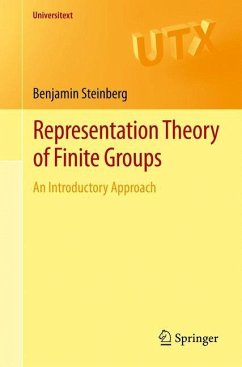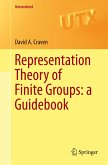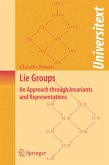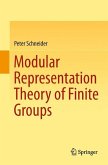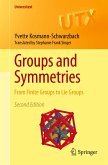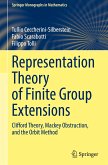This book is intended to present group representation theory at a level accessible to mature undergraduate students and beginning graduate students. This is achieved by mainly keeping the required background to the level of undergraduate linear algebra, group theory and very basic ring theory. Module theory and Wedderburn theory, as well as tensor products, are deliberately avoided. Instead, we take an approach based on discrete Fourier Analysis. Applications to the spectral theory of graphs are given to help the student appreciate the usefulness of the subject. A number of exercises are included. This book is intended for a 3rd/4th undergraduate course or an introductory graduate course on group representation theory. However, it can also be used as a reference for workers in all areas of mathematics and statistics.
From the reviews: "Steinberg ... provides a one-semester course on representation theory with just linear algebra and a beginning course in abstract algebra (primarily group theory) as prerequisites. ... the author covers most of the standard introductory topics in representation theory. The exercises provide more examples and further common results. It is the applications that Steinberg uses to motivate the subject that make this text both interesting and valuable. ... Overall, a very user-friendly text with many examples and copious details. Summing Up: Recommended. Upper-division undergraduates through researchers/faculty." (J. T. Zerger, Choice, Vol. 49 (11), August, 2012) "The book consists of 157 pages spread over 11 chapters. ... This book is an introductory course and it could be used by mathematicians and students who would like to learn quickly about the representation theory and character theory of finite groups, and for non-algebraists, statisticians and physicists who use representation theory." (Jamshid Moori, Mathematical Reviews, Issue 2012 j) "The required background as to this introductory course on group representations, is in the level of linear algebra, group theory and some ring theory. ... the book under review is a welcome one for students at an advanced undergraduate or introductory graduate level course, also for those people like physicists, statisticians and non-algebraically oriented mathematicians who need representation theory in their work." (R. W. van der Waall, Zentralblatt MATH, Vol. 1243, 2012) "The author has, by combining clear writing with an accessible and minimal-prerequisite approach to group representations, created a book that may well help bring group representation theory into the undergraduate curriculum. This is an impressive and useful text, and should be looked at by anybody with an interest in the subject." (Mark Hunacek, The Mathematical Association of America, February, 2012)

